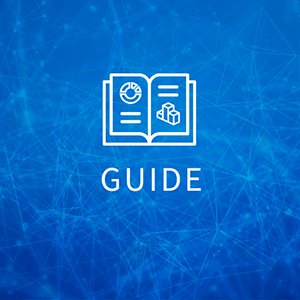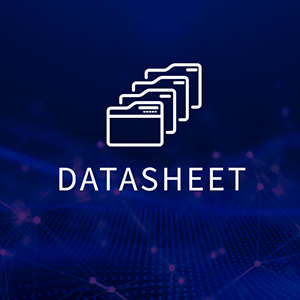Table of contents
Do not edit: TOC will be auto-generated
Introduction
Managing many technology assets, from hardware and software to cloud resources and network devices, is a monumental task. Organizations need a centralized view of their IT infrastructure to make informed decisions, ensure operational efficiency and maintain compliance. This is where a Configuration Management Database (CMDB) becomes indispensable. This guide will delve into what a CMDB is, how it functions, its critical role in IT management, common challenges, and best practices for successful implementation.
What is a CMDB?
A CMDB is an organization-wide database designed to serve as a comprehensive reference for all technology assets, commonly known as Configuration Items (CIs), and their contextual relationships within the IT estate. These CIs typically encompass hardware, software and increasingly, hybrid technologies. The fundamental goal of a CMDB is to equip an organization with the necessary information to drive better business decisions, streamline IT asset management practices, and support crucial infrastructure and service processes such as IT Service Management (ITSM) and IT Financial Management (ITFM).
How does a CMDB work? What kind of data is stored in a CMDB?
Organizations primarily implement CMDBs to establish a centralized repository for CIs, facilitate change management, enhance incident and problem resolution, and generally improve ITSM. While CMDBs can vary significantly based on an organization’s specific needs and infrastructure complexity, they typically store the following types of data:
- Attributes and properties: Detailed information about each CI, such as its name, type, manufacturer, model, serial number, version, status, and location.
- Relationships: Crucial connections and dependencies between different CIs. For example, a CMDB can show which applications run on which servers, or which network devices are connected.
- Hierarchy and topology: The structural organization of CIs, illustrating how they fit into the overall IT infrastructure and service delivery.
- Configuration baselines: Snapshots of CI configurations at specific points in time, useful for auditing and rollback purposes.
- Versioning and history: A record of changes made to CIs over time, providing an audit trail and enabling analysis of configuration evolution.
- Lifecycle management: Information about the various stages of a CI, from procurement and deployment to maintenance and retirement.
- User access and permissions: Details on who has access to specific CIs and what actions they are authorized to perform.
- Integration and data sources: Information about how the CMDB integrates with other IT systems (e.g., asset management, monitoring tools) and where its data originates.
- Customization and extensions: Details on any custom fields or extensions added to the CMDB to meet unique organizational requirements.
CMDBs often provide robust reporting and visualization capabilities, enabling users to understand complex relationships and dependencies within the IT environment. They also offer search and query functionalities to retrieve specific information about assets quickly. The utility of CMDB data extends to various IT stakeholders, including asset managers, enterprise architects, information security teams, cybersecurity teams, ITSM professionals and even cloud architects who leverage asset inventory data for strategic planning.
What can you do with a CMDB?
CMDBs serve as a foundational tool for effective IT management, providing a centralized repository and enabling informed decision-making across a multitude of strategic initiatives. Here’s how CMDBs can help through the contextualization of IT assets:
- IT Asset Management (ITAM): CMDBs are integral to ITAM, helping organizations track hardware and software assets, often including their lifecycle stages, ownership, utilization, compliance status and associated costs. This provides a holistic view of the IT asset landscape.
- Identify relationships and dependencies: A core strength of a CMDB is its ability to discover and visualize the intricate relationships between different CIs. For instance, it can reveal which applications are hosted on specific servers or how network devices are interconnected. This is particularly valuable for understanding the impact of changes on business services, where updating or removing applications can have cascading effects.
- Change management and incident/problem management: CMDBs are frequently used with change management processes. When IT changes are planned, the CMDB helps assess their potential impact on other components by illustrating interdependencies. Furthermore, during incidents or problems, the CMDB can rapidly identify affected components and their relationships, significantly accelerating troubleshooting and resolution times.
- Reporting and analysis: CMDBs offer powerful reporting and visualization capabilities that provide deep insights into the IT environment. This includes understanding application rationalization, resource utilization and consumption, lifecycle management (identifying end-of-life or end-of-support assets), pinpointing potential vulnerabilities (versions, patches, updates), and planning for capacity upgrades and cloud migration efforts.
Challenges with implementing and maintaining a CMDB
Implementing and maintaining a CMDB can be a significant undertaking, requiring considerable investment in time, effort and cost. Common challenges include:
- Data accuracy and completeness: Ensuring that the data within the CMDB is accurate, complete, and up-to-date is a perpetual challenge. Inaccurate or missing data can undermine the CMDB’s effectiveness and lead to erroneous decisions. Maintaining data quality often requires a combination of human curation, machine learning, artificial intelligence, and automated processes.
- Expertise requirements: Effective CMDB implementation demands expertise in configuration management, data modeling, and ITSM. Organizations lacking this specialized knowledge may face obstacles in setting up an optimal CMDB.
- Data consistency, standardization and upkeep: Different teams or departments may use varying naming conventions and data formats, leading to inconsistent and unstandardized data. Normalizing data from myriad sources can be complex and time-consuming. Moreover, keeping the CMDB current requires ongoing effort, as changes in the IT environment (e.g., hardware upgrades, software installations) must be accurately reflected.
- Integration complexity: Integrating the CMDB with existing systems, such as asset management, incident management, and change management tools, can be complex. Careful planning is essential to ensure data consistency and accuracy across integrated platforms.
- Scope management: Defining the scope of what to include in a CMDB can be tricky. The hybrid IT landscape is constantly evolving, with ephemeral items like containers rapidly expanding entries. Including too much information can lead to overwhelming complexity, while excluding critical items can limit the CMDB’s usefulness. Selecting appropriate tools that align with organizational needs, scalability, and integration capabilities is also crucial.
- Security and access control: CMDBs contain sensitive information about an organization’s IT infrastructure. Ensuring data security and compliance with privacy regulations while granting appropriate access to authorized personnel is a delicate balancing act.
Successful CMDB implementation and maintenance require sustained commitment of time, human capital, and financial resources. Organizations must allocate these resources appropriately to ensure the project’s long-term success and continued value.
Best practices for implementing a successful CMDB
Establishing and adhering to best practices can help your organization maximize the benefits derived from its CMDB, leading to improved IT asset and service management, more reliable decision-making, and enhanced overall operational efficiency:
- Define clear objectives: Clearly articulate the goals and objectives for your CMDB implementation. Understand and illustrate the specific problems you aim to solve and how the CMDB will contribute to broader IT and business objectives.
- Establish scope and involve stakeholders: Define a manageable scope for what will be included in your CMDB to prevent unnecessary complexity. Crucially, involve representatives from all relevant IT teams and business units, and secure leadership buy-in. Collaboration and diverse input ensure the CMDB meets the needs of the entire organization.
- Ensure accuracy, consistency and regular maintenance: Implement data standards, naming conventions, and validation processes to ensure data accuracy, completeness, and consistency. Establish processes for regularly updating the CMDB to reflect changes in the IT environment. Ensure clear and accurate relationships between CIs and understand dependencies for effective change and incident management. Incorporate contextual metadata to enhance understanding of each CI. Regularly validate and audit data to identify and correct inaccuracies, ensuring alignment with the actual IT infrastructure. Document processes and gather user feedback for continuous improvement.
- Automate discovery and integration: Reduce manual data entry by implementing automated discovery tools that scan the network and collect CI information. Integrate the CMDB with change management processes to ensure that IT environment changes are automatically documented, accurately reflecting the current state of the hybrid IT estate.
- Prioritize security and access control: Given the sensitive nature of CMDB data, prioritize security and compliance. Implement role-based access control to ensure only authorized personnel can access and modify CMDB information, safeguarding data privacy.
By diligently applying these best practices, organizations can unlock the full potential of their CMDB, transforming it into a powerful tool for IT management.
How Flexera can help
Flexera provides solutions that enhance CMDB effectiveness by offering unparalleled visibility into your IT estate. With Flexera One, our tools can help you:
- Improve data accuracy: Automate discovery and normalize data from disparate sources, ensuring your CMDB is populated with accurate and up-to-date information.
- Enhance relationships and dependencies: Gain deeper insights into the connections between your CIs, enabling better impact analysis for changes and faster incident resolution.
- Optimize IT asset management: Leverage comprehensive data to track, manage, and optimize all your IT assets, reducing costs and ensuring compliance.
- Streamline operations: Integrate with existing ITSM and other IT systems to create a unified view and streamline workflows.
With Flexera, you can transform your CMDB from a data repository into a strategic asset that drives informed decision-making and operational excellence.
CMDBs empower dynamic environments
A CMDB is a strategic tool that provides the foundational visibility and interconnectedness required for effective IT management in today’s dynamic environments. While challenges exist in its implementation and maintenance, adhering to best practices and leveraging advanced solutions can unlock significant benefits, leading to improved efficiency, compliance, and cost optimization across the IT landscape.
To learn how to get clearer IT visibility into your CMDB, get a free analysis. Contact Flexera today to explore our solutions and enhance your CMDB capabilities.







